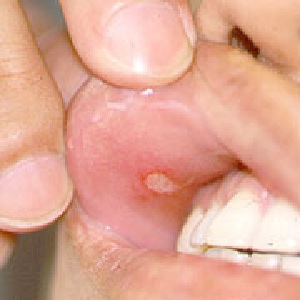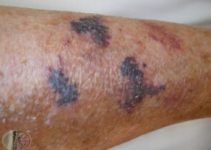What is Behcet’s Disease (Behcet’s syndrome)
Page Contents
- 1 What is Behcet’s Disease (Behcet’s syndrome)
- 2 Causes
- 3 Risk Factors
- 4 Signs and Symptoms
- 5 Complications
- 6 Diagnosis and Tests
- 7 Differential Diagnosis
- 8 Treatment and Management
- 9 Alternative Methods of Management
- 10 Diet to Follow with Behcet’s Syndrome
- 11 Prognosis
- 12 Incidence and Prevalence
- 13 ICD-9-CM and ICD-10-CM Codes
Behcet’s disease or Behcet’s (pronounced: beh-CHETS) syndrome, named after the Turkish dermatologist Hulusi Behcet, is a rare inflammatory disorder that can affect blood vessels throughout the body. The autoimmune disease may cause inflammation in the eyes, sores in the mouth, ulcers on the genitals, and skin rashes, although the effects usually vary from person-to-person.
Causes
Behcet’s disease is not well understood, and more research is needed to establish its specific causes. However, some research works indicate that bacterial, viral, environmental, and genetic factors play a role in causing the immune system to attack its own healthy blood vessels and cells. Exposure to infectious agents like Staphylococcus, Escherichia coli, Streptococcus bacteria, and herpes simplex virus could possibly trigger its development in individuals who are genetically susceptible to the disease.
Risk Factors
- Gender: Men are more likely to get affected than women.
- Age: Occurs usually in both young and middle-aged men and women (20-40 years old), although children and older people also can have Behcet’s syndrome.
- Origin: It normally affects people from countries along the old Silk Road, stretching from the Far East to the Middle East, including Japan, China, Iran, Egypt, Israel, and Turkey.
- Genes: People with the gene HLA-B51 or HLA-B5 are at risk of developing the disease.
Signs and Symptoms
Patients with Paget’s syndrome may experience episodes of the symptoms flaring up and getting better on their own (remission). Common symptoms include:
- Painful genital and mouth sores.
- Skin lesions such as acne-like spots or an abnormal growth.
- Lymphadenopathy causing abnormal enlargement or swelling of lymph nodes.
- Inflammation in the eye, called uveitis causes pain, redness, along with blurred vision.
- Pain and swelling of joints, involving knees, elbows, ankles, or wrists.
- Inflammation in veins and arteries causes pain, swelling, and redness in the arms and legs, which may result in the formation of blood clots.
- Systemic vasculitis may cause extreme fatigue, limiting the ability to do any activity and impairing quality of life.
- Abdominal pain, loss of appetite, indigestion, diarrhea, vomiting.
- A headache, loss of balance, fever, seizures, or double vision caused by inflammation in the central nervous system (CNS).
Complications
- Decreased or permanent loss of vision caused by severe uveitis.
- Bloody stools due to the damage caused by inflammation of the internal intestinal lining.
- Severe neurological disorders such as personality or behavioral changes, or partial paralysis due to CNS inflammation and brain stem lesions.
- Cerebral venous thrombosis or a blood clot inside the veins and arteries of the brain, increasing the pressure and cutting the blood supply, resulting in stroke-like symptoms.
- Aneurysms and blockage of blood vessels due to swelling in large arteries.
- Rarely, organ dysfunction or internal bleeding.
Diagnosis and Tests
No specific tests can definitively reveal Behcet’s syndrome since it takes several months or years before the common symptoms appear. Diagnosis is based on a set of clinical guidelines associated with the occurrence of symptoms.
The clinical criteria established for classification of Behcet’s disease states patients must have recurrent mouth ulcerations (thrice or more in a year) along with at least two of the following:
- Recurrent genital sores
- Retinal inflammation, uveitis, or other eye problems
- Skin sores and rashes
- Positive pathergy test
Imaging Tests
- Radiographs, MRI, or CT scan of sacroiliac joint and peripheral joints may indicate inflammation and accumulation of synovial fluid in the cavity.
- Brain MRI, CT scanning, or MRA to identify inflammation of blood vessels in the brain (cerebral vasculopathy) and places of restricted blood circulation (acute ischemia). SPECT scan (single-photon emission computed tomography) of the brain can indicate insufficient blood flow (cerebral hypoperfusion or ischemia).
- Angiography for evaluating aneurysms.
- Doppler ultrasonography to rule out other causes of venous blockage.
Pathergy Test
The patient’s forearm is pricked with a small, sterile needle and the area is examined after 1-2 days. The test gives a positive result if a small red spot or bump appears under the skin, which means the patient’s immune system has overreacted to the minor injury.
Other Tests
Bowel tests, lumbar puncture, and skin biopsy might be required for individual patients depending upon the symptoms for the diagnosis.
Differential Diagnosis
- Antiphospholipid Syndrome
- AA (Inflammatory) Amyloidosis
- Granulomatosis with Polyangiitis
- Paraneoplastic Syndromes
- Inflammatory Bowel Disease
- Systemic Lupus Erythematosus (SLE)
- MAGIC or “mouth and genital ulcers with inflamed cartilage” syndrome
- PFAPA or “periodic fever, aphthous-stomatitis, pharyngitis, adenitis” syndrome
- Reactive arthritis, psoriatic arthritis, ankylosing spondylitis
- Sarcoidosis
- HIV/AIDS
- Bacterial and viral infections
- Nutritional/hematological deficiencies
Treatment and Management
There is no cure for Behcet’s syndrome, though a treatment plan involving a combination of medications can help in relieving symptoms. Depending on the severity of symptoms, patients may need to take temporary medication to control flare-ups in pain and inflammation. Alternatively, people with Behcet’s disease may require long-term treatment to stop the development of serious complications.
Medication
- Corticosteroids like methylprednisolone, prednisone, and dexamethasone are given intravenously for arthritis, topically for ulceration or eye problems, and orally for systemic symptoms. Their long-term use may increase the risks of high blood pressure, heartburn, weight gain, and osteoporosis.
- Immunosuppressants including azathioprine, cyclophosphamide, chlorambucil, cyclosporine, and methotrexate to reduce the immune response, and thus stop the inflammation process that triggers other symptoms of Behcet’s syndrome. While mild side effects include hair loss, abdominal pain, and weakness, chronic use of these medications may cause liver and kidney function impairment. Some of the immunosuppressants may cause miscarriage or birth defects and should be avoided during pregnancy.
- Anti-inflammatory medication such as colchicine, triptans, and NSAIDs are used for lessening pain and headaches.
- Biologics like TNF-α inhibitors that target the antibodies associated with the process of inflammation. Common anti-TNF drugs include infliximab, interferon alpha, etanercept, certolizumab, adalimumab, and golimumab.
Surgery
Surgical care is needed when eye, lung, heart, gastrointestinal, and neurological complications develop, including:
- Abnormal narrowing (stenosis) in blood vessels of the intestine.
- Fistula formation, severe bleeding, and perforation in GI tract.
- Aneurysms and ischemic damage to the lungs, requiring surgical excision.
- Obstruction of blood flow in coronary arteries or veins (coronary thrombosis), formation excess tissues in endocardium (endocardial fibrosis).
- Sores and ulcers, not responding to medication.
- Cataracts, retinal detachment, and glaucoma.
- Aneurysms and clots in the central nervous system.
Alternative Methods of Management
- Activity level should be adjusted as tolerated by the patient. Some limitations are imposed if there are symptoms of arthritis present.
- Essential oils derived from cinnamon leaf, ginger, juniper berries, cypress, and clary sage may be used as anti-inflammatory massage oil for lessening joint pain and muscle stiffness.
Diet to Follow with Behcet’s Syndrome
Patients with Behcet’s disease involving gastrointestinal complications are recommended to follow a similar diet recommended for people with inflammatory bowel disease. Special liquid food containing glucose, salts, vitamins, minerals, lipids, and amino acids may be given intravenously. Anyone with the Behcet’s syndrome should avoid milk, cheese, ice cream, and yogurt since a recent study has shown intake of dairy products may worsen autoimmune symptoms in some individuals.
Prognosis
As medical therapy can relieve moderate symptoms and control flare-ups, patients with Behcet’s syndrome can lead a normal life. Deaths are occasionally reported in people exhibiting major vascular, gastrointestinal, or neurological complications, and frequent flare-ups.
Incidence and Prevalence
Data from recent studies in the US identified 0.12-0.33 cases of Behcet’s disease per 100,000 Americans. In Turkey, its prevalence is the highest being 420 per 100,000 population. It ranges from 13.5-22 per 100,000 inhabitants in Korea, Japan, China, Saudi Arabia, and Iran. In Europe and North America, only 1 case was reported per 15,000-50,000 inhabitants.
ICD-9-CM and ICD-10-CM Codes
The ICD-9-CM code for Behcet’s disease is 136.1, and the ICD-10 code is M35.2.


